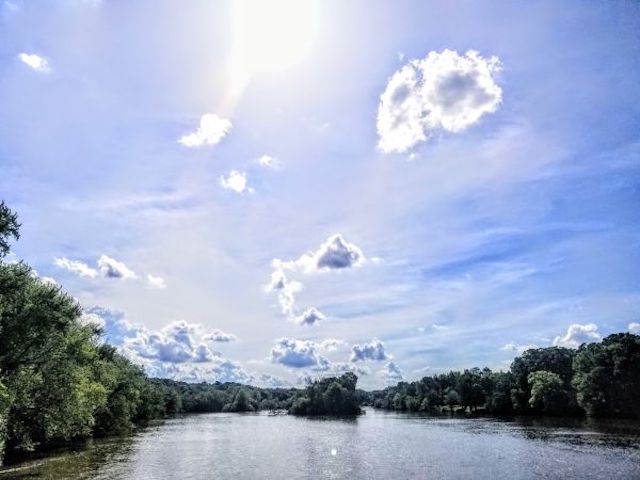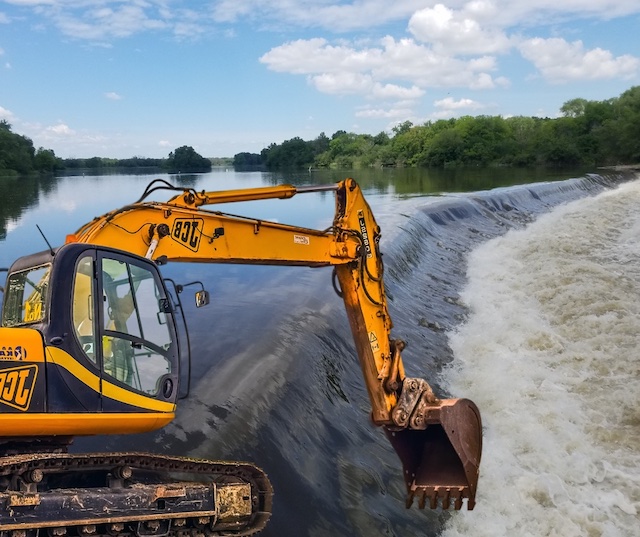April is Earth Month, and Earth Day is officially on April 22nd. The concept of Earth Day is to recognize human dependence upon earth systems and to honor our mother, Earth. This tradition has been around for fifty-two years. In 1970, the developed world was just beginning to realize the impacts of our consumptive culture. Litter was considered a major environmental issue and climate chaos was not even on the radar. Polluted air and water, growing extinctions, and impacts upon human health were making news and generating actions; public concern pressured governments to act. Since that time, we have seen many improvements with the human relationship toward nature and our own Fox River has benefited from controls on industrial and municipal discharges. Over these fifty years, the Fox River has greatly improved in water quality and biological health and the raw sewage and diseased fish that were once common are now nonexistent. The Fox River is recovering.
History of Harmony

Once upon a time, humans and nature lived in harmony. Our legacy of environmental abuse is actually not a human trait. For thousands of years, humans have coexisted with nature all over the world, including right here in the Fox River Valley. Living in harmony with natural systems was part of survival. Awareness of how those systems worked was essential for finding and harvesting food sources. Native Americans managed their operations in what now is known as sustainable practices. Life alongside bison and using fire as a tool were essential skills, but they were also important and celebrated parts of their culture. Being in harmony with nature was a sweet dance. Now, ecological restoration and fire management are considered a science, and sustainability is now a college degree or certificate offered in the industrial world.
Nature as a Commodity

When European settlers drove the Native Americans from this valley, things changed; nature was no longer seen as a family member. Nature was considered a commodity and something to be conquered, controlled, and improved. Forests were cleared, prairies plowed, wildlife over hunted and replaced with domestic livestock, and Fox River towns employed dams for hydro power. The harmonious culture of the former residents was replaced with short-term interests. It is a sad story, but both the natural systems and our own well-being have been the victim of our short-sighted pursuits. Luckily, it is not the end of the story. Foresighted individuals preserved some open spaces and the modern-day infantry of ecological restorationists is growing. What started as a tree-hugger movement is now a profession because it makes environmental and economic sense to live sustainably.
Start in Your Yard

This Earth Day is an important time to reflect upon our place. Nature has been abused and some things are not repairable. Extinction really is forever but nature is also resilient. The Earth Day slogan, “Save the Earth” implies that something is wrong with the Earth. The affliction is actually modern human culture’s poor or nonexistent relationship with the natural systems. The view of all insects as pests instead of crucial components of our complex ecosystems is an example. They are the pollinators of the flora and prey for other fauna and not something to fear, squash, and poison. Understanding and being part of the local natural system is something that you can start right in your yard this spring. https://startinyouryard.com/
Restoring the Fox River

Since the first Earth Day, the Fox River has come a long way. However, direct pollution threats to the Fox River have been replaced by indirect stressors from increased run off and single use plastics. These are areas that we can better manage. One significant obstacle to restoring the health of the Fox River still remains; the dams that were constructed in the early 1800’s for hydro power no longer have a function. They remain as a disruption to the natural free-flowing system on nearly half of the river’s length. They are a monument of the past that significantly blocks the further improvement of water quality and aquatic wildlife distribution. In many communities, dams are a liability as a threat to human safety. The restoration of the Fox River’s natural system is in the process. Carpentersville Dam’s removal this fall will be a significant step in healing a disrupted river system.
Earth Day Every day

Living the principles of Earth Day every day is a cultural practice. The awareness of modern Americans did not begin in 1970. If we are to survive and return to a thriving natural human culture, we must respect the natural systems. This Earth Day, look around your living space and notice how you are fitting into the natural systems. Do you have some native vegetation that offers food for the insects and birds? As nature’s early bloomers will be emerging soon, native plant sales begin to be popping up in most communities. They can offer stock and advice for you. Restoring the free flow of our Fox River through dam removals is a large task, but restoring the native vegetation one perennial or one tree in one yard at a time is something we all can contribute toward. The practices that restore a healthy environment are cultural practices. Let’s celebrate being part of nature, every day.
Here are a few resources from our partners for your use:
Greater Kane County Wild Ones
Start In Your Yard startinyouryard.comhttps://startinyouryard.com/
Native Plant Sale on May 14, 10-2, at Gray Willows Farm
Natural Communities – consultation and wholesale plants
Thanks to Living Lands and Waters for providing free oak saplings for our friends. Contact us at: Info@friendsofthefoxriver.org for pickup or delivery arrangements
